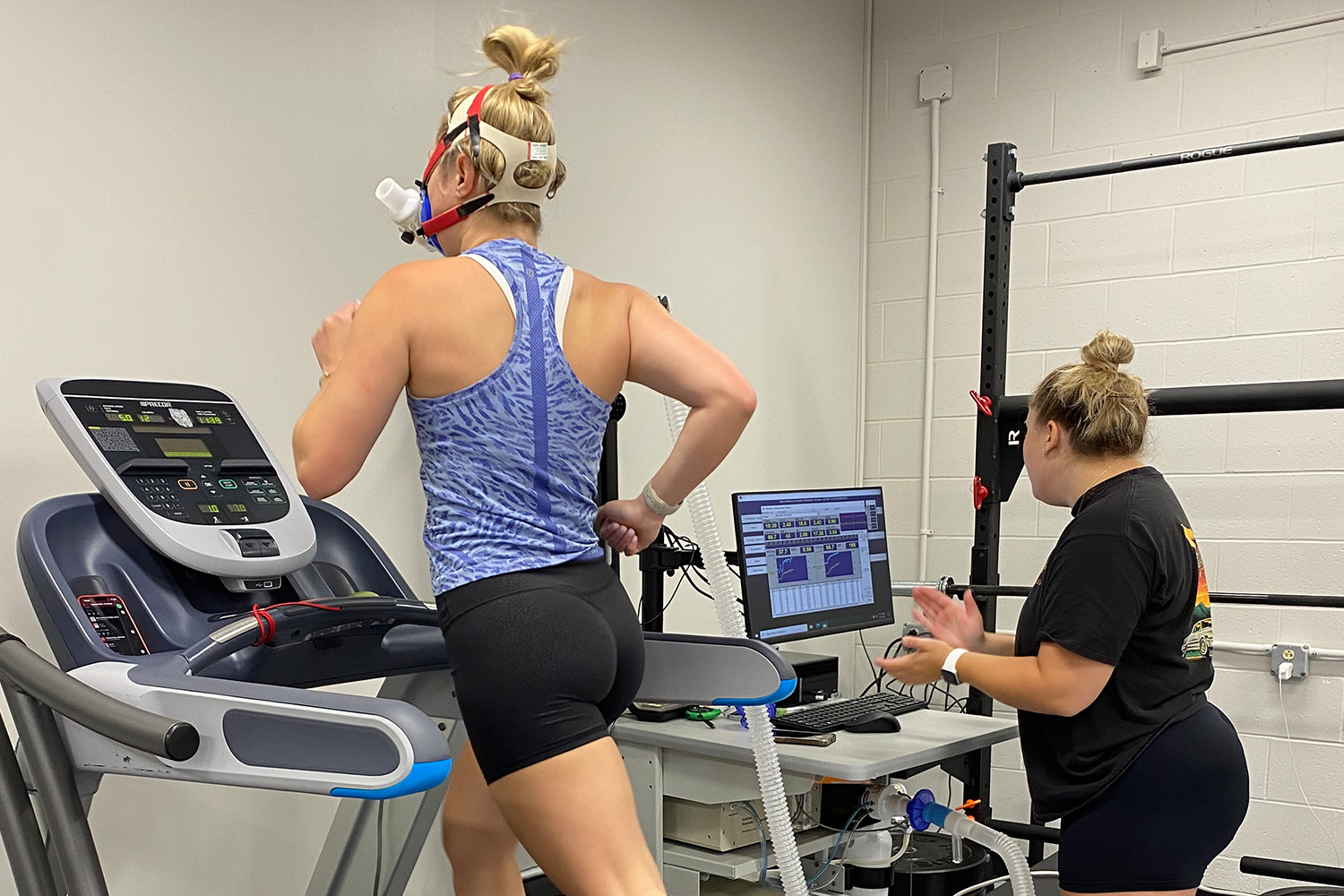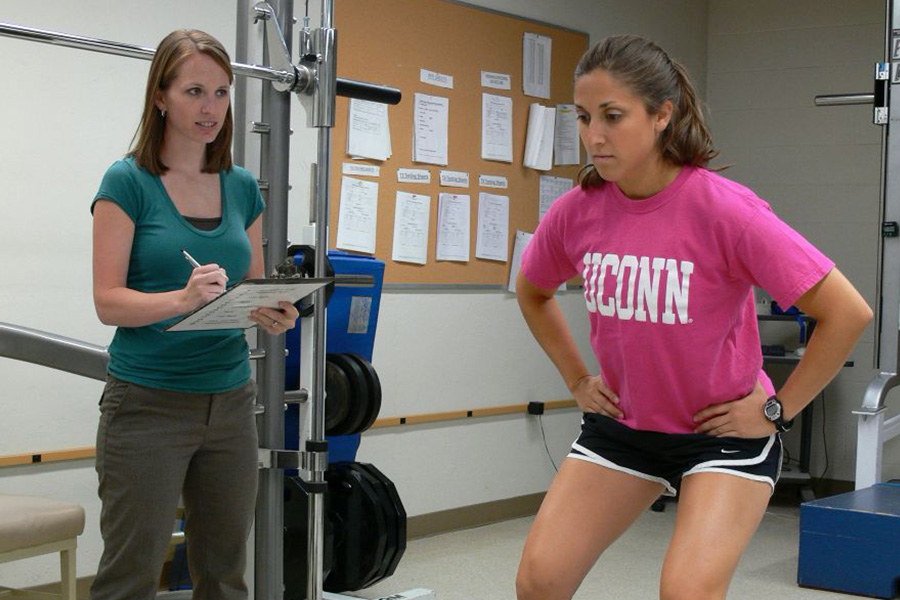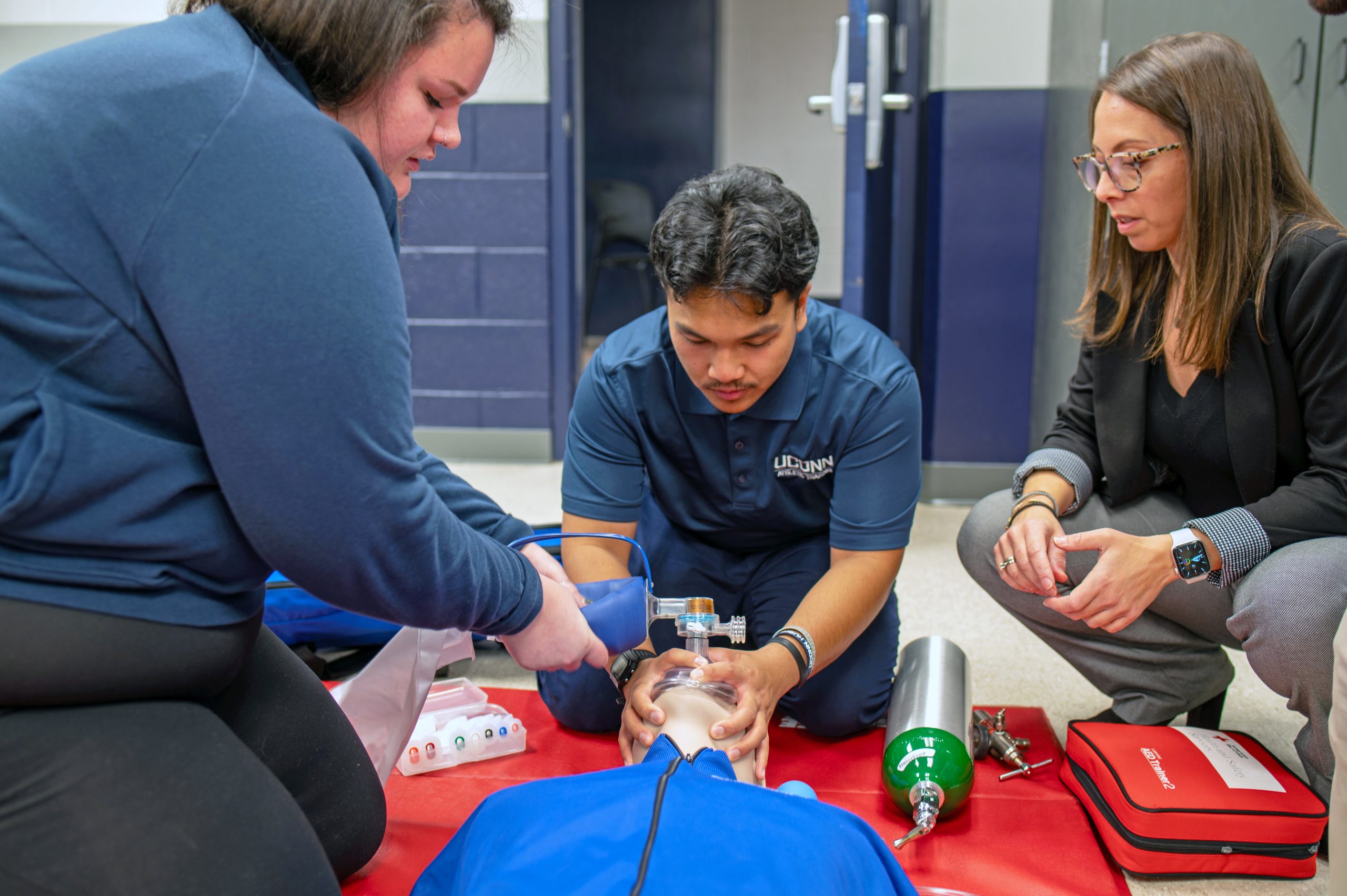Facilities
Coming soon!
Mission Heat Lab at UConn’s Korey Stringer Institute
The MISSION Heat Lab at UConn’s Korey Stringer Institute is a comprehensive environmental physiology and exercise testing lab. Featuring a 450 sq. ft. environmental chamber capable of precisely controlling ambient temperature from 40°F to 110°F, humidity from 20% to 90% and radiant heat simulating from full cloud cover to unobstructed sun, the facility is prepared to simulate the thermal environments faced by athletes, warfighters and laborers. Unique to the facility is the inclusion of a bathroom and dedicated cooling area within the environmental chamber, allowing for uninterrupted testing. The lab is also fully equipped with state-of-the-art equipment, including high speed treadmills, advanced bike ergometers and a comprehensive physiological monitoring system, to apply exact exercise intensities and accurately measure the responses.
KSI Labs
In addition to the Mission Heat Lab, KSI works within UConn’s Human Performance Laboratory, which operates 7,800 square feet of space for research studies in areas such as thermoregulation, hydration, and athlete performance testing. Specific technologies include:
- systems physiology
- exercise biochemistry
- nutritional research
- endocrine function
- molecular and cellular signaling
- body composition
- brachial artery reactivity
- ultrasound imaging
- strength/power testing

Environmental Physiology Heat Chamber
The laboratory includes an environmental chamber with exercise equipment including various treadmills, a cycle trainer, and a cycle ergometer. The environmental chamber can range in temperature from 0-40°C, with control of relative humidity and wind. Various testing protocols take place in this space including, but not limited to, heat acclimatization, heat tolerance testing, sweat electrolyte testing, sweat rate determination, and VO2 max testing.

Biomechanics Lab
This lab contains state-of-the-art dual force plates and camera equipment to capture human movement. One of the primary goals of this lab is the analysis of movement patterns and jump-landing tasks to determine the efficacy of injury prevention programs. Other goals include increasing awareness and reducing injury rates of anterior cruciate ligament (ACL) and other lower musculoskeletal injuries by:
- Implementing injury prevention warm-up programs with sports teams
- Screening individuals/teams for injury risk and customized prevention programs
- Working individually with athletes post-injury to evaluate rehabilitation progress and injury risk
Information on comprehensive screening, functional rehabilitation, and prevention plans for ACL injuries.

Athletic Training Learning Lab
This learning environment designed for the Department of Kinesiology athletic training program was created to mimic an athletic training room in form and function. This room is used for classes in the athletic training curriculum to emphasize hands-on learning laboratory sessions, open lab times for study groups and review sessions, as well as certification examination test preparation.

Biochemistry Lab
The Human Performance biochemical laboratory is utilized for research purposes to conduct various analyses of proteins in any biological tissue. Some state-of-the-art equipment in this lab includes, but is not limited to, a flow cytometer, spectrophotometer, microplate reader, and a high performance liquid chromatography.
